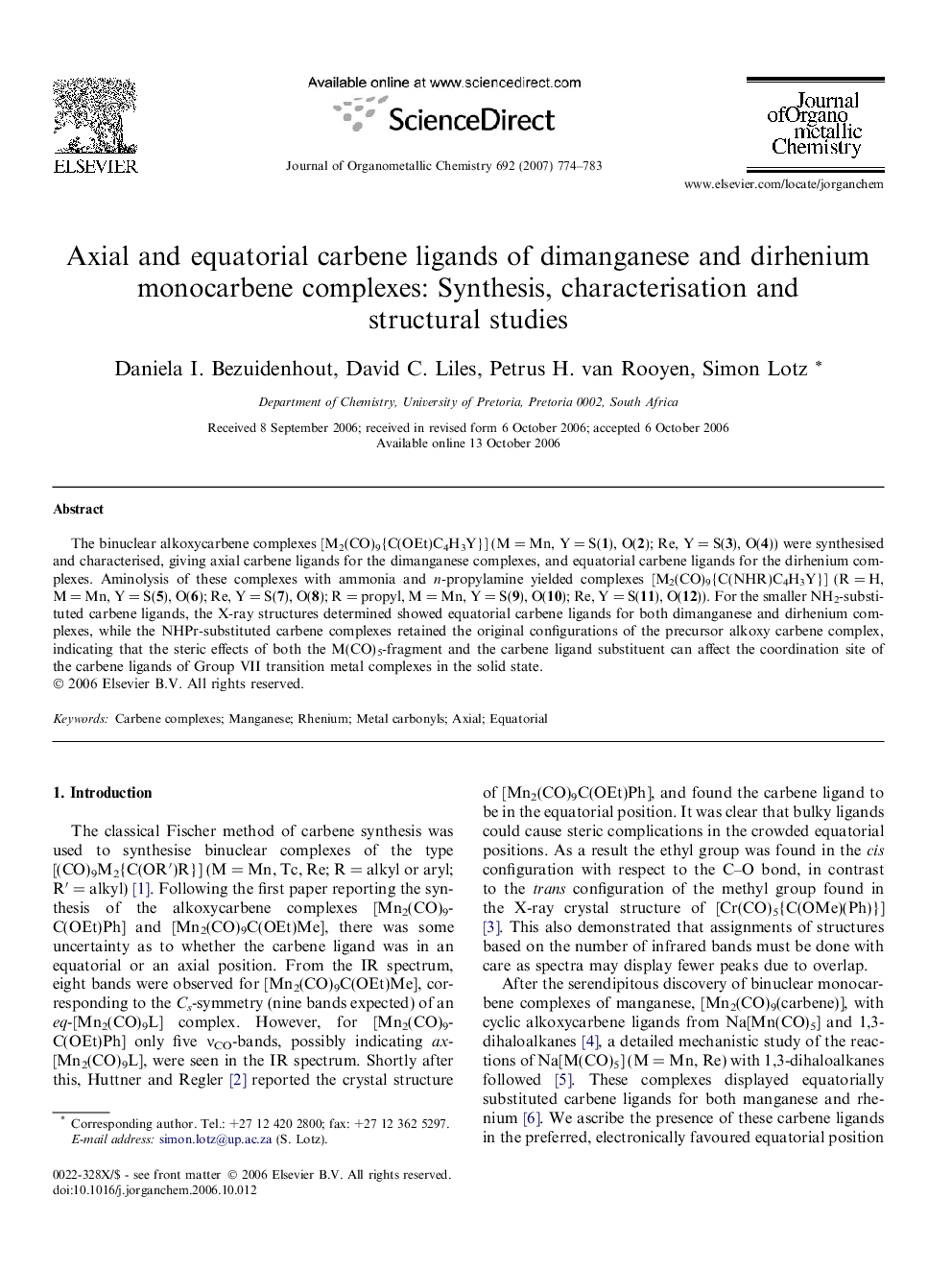| Article ID | Journal | Published Year | Pages | File Type |
|---|---|---|---|---|
| 1323565 | Journal of Organometallic Chemistry | 2007 | 10 Pages |
The binuclear alkoxycarbene complexes [M2(CO)9{C(OEt)C4H3Y}] (M = Mn, Y = S(1), O(2); Re, Y = S(3), O(4)) were synthesised and characterised, giving axial carbene ligands for the dimanganese complexes, and equatorial carbene ligands for the dirhenium complexes. Aminolysis of these complexes with ammonia and n-propylamine yielded complexes [M2(CO)9{C(NHR)C4H3Y}] (R = H, M = Mn, Y = S(5), O(6); Re, Y = S(7), O(8); R = propyl, M = Mn, Y = S(9), O(10); Re, Y = S(11), O(12)). For the smaller NH2-substituted carbene ligands, the X-ray structures determined showed equatorial carbene ligands for both dimanganese and dirhenium complexes, while the NHPr-substituted carbene complexes retained the original configurations of the precursor alkoxy carbene complex, indicating that the steric effects of both the M(CO)5-fragment and the carbene ligand substituent can affect the coordination site of the carbene ligands of Group VII transition metal complexes in the solid state.
Graphical abstractThe coordination site of the carbene ligands of dinuclear Group VII transition metal complexes can be converted from an axial to an equatorial configuration depending on the steric and electronic effects of both the M(CO)5-fragment and the carbene ligand substituent.Figure optionsDownload full-size imageDownload as PowerPoint slide
